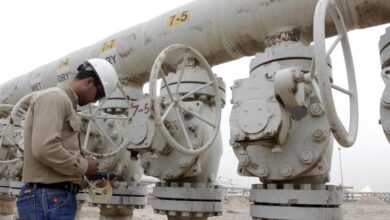Widely consumed, hardly known: A different commodities perspective

The world’s appetite for minerals and materials is growing exponentially and is by far outpacing growth of the population.
In just the past six years alone the global economy has consumed more than 582 billion tonnes of materials — nearly as much as the entirety of the 20th century – 740 billion tonnes.
With a Tesla Model S Long Range EV weighing 4,560 pounds (2.068 tonnes) the global consumption of materials consumed over those six years equates to manufacturing 281.43 billion Model S Long Range vehicles.
About half of everything the world consumes comprises sand, clay, gravel, and cement – all predominantly used for building and construction – along with the other minerals which are mined to produce fertiliser.
Fossil fuels like coal, as well as oil and gas make up 15% of total consumption, while metals comprise 10%. The remaining 25% is made up of plants and trees used for food and fuel.
Australia is one of the world’s top 10 extractors of natural resources.
According to a March 2024 CSIRO report, the country extracted 2.587 billion tonnes of virgin material from the continent and its ocean shelves in 2019 alone. To that, 119 million tonnes of imported material (mostly consumer goods) were added and a further 39Mt was re-used after recycling.
From this total material input, 1.459 billion tonnes of material was exported from Australia, leaving 1.287 billion tonnes processed for domestic consumption.
Australia and the rest of the world rely on a plethora of materials to make everyone’s lives better. While the likes of aluminium, coal, copper, gold, iron ore, lithium, and rare earths are commonly talked about, many others exist that are widely consumed but hardly known.
Each year, the United States Geological Service (USGS) publishes commodity summaries outlining global mining statistics for more than 90 individual minerals and materials.
Some of these materials can be classified as ‘non-fuel’. Once non-fuel minerals are used up there is no replacing them – although many can be recycled continuously.
Some minerals are essential ingredients for others on the list. For example, iron ore is critical for steel production and bauxite ore gets refined into aluminium.
Garnet: Garnering global attention
One such material garnering global attention is garnet.
Heavy Minerals (ASX:HVY) is in rare company within this niche market. It’s an Australian industrial minerals exploration company with projects prospective for industrial minerals including but not limited to garnet, zircon, rutile, and ilmenite.
Heavy Minerals is developing the Port Gregory Garnet Project in the established mineralogical terrain of the Hutt River Garnet area within the Shire of Northampton in the mid-west coastal region of Western Australia.
Aaron Williams is the company’s non-executive Director. Speaking to Mining.com.au, the highly regarded garnet industry veteran details how garnet’s appeal lies in its unique physical qualities — hardness, density, non-friability, inertness, and safety — rather than its chemical properties.
He highlights there is a lack of transparency in the industrial garnet market, noting industrial garnet is not traded or quoted as a commodity but is priced based on its “value in use” and grade quality. This lack of transparency makes it difficult to ascertain outlooks on market fundamentals and pricing.
Garnet is often sold by way of long-term sales contracts with pricing typically being consistent for the term of the agreement, garnet is different to many commodities in that there isn’t a spot price.
Williams says the availability of high-quality almandine garnet and shipping rates are two key factors that affect the price point of the material.
“However, what we are seeing play out in the market in recent months is the garnet price point has been impacted by high container costs so garnet shipped in containers has seen a significant price increase,” he tells this news service.
“Perhaps the most critical differential in the marketing of almandine garnet when compared to other traditional minerals sands is the importance of distribution, branding and promotion.”
Published data is not readily available for garnet so distributors are often relied upon for market information.
A known garnet brand like GMA Garnet reportedly sells for about $850-plus per tonne in Sydney, which includes the manufacturer’s and distributor’s margin. Lesser known brands in some countries in which quality is not as high sell for less.
The United States Geological Service (USGS) reports players from regions with lower production costs, such as India and China, often compete aggressively on price. However, Williams says this must be balanced with the need for quality to meet the demanding specifications of end-users.
The global almandine garnet market can be categorised into two main types – alluvial garnet from Australia and India, and hard rock garnet from China and, to a lesser extent, North America. Historically, the highest quality alluvial almandine garnet comes from the Port Gregory region in Western Australia, which hosts Heavy Minerals’ large deposits and the two operating garnet mines, GMA Garnet and Australian Garnet.
As Williams explains to Mining.com.au, industrial almandine garnet is typically sold in 1-2 tonne lots to the end client and it’s crucial to establish a strong brand name that signifies quality, reliability, and performance.
He notes price competition remains fierce, particularly from regions with lower production costs like India and China, but quality remains crucial to meet the stringent specifications of end-users.
Other natural and manufactured abrasives can substitute to some extent for all major end uses of garnet. In many cases, however, using the substitutes would entail increased cost or decreased quality.


Much of the high-quality almandine alluvial garnet comes from mines that are heavily leaning towards the finer particles sizes – which are typically used within the ultra high pressure waterjet cutting industry. Accordingly, Williams says there is an oversupply of the finer alluvial garnet, but an under supply of coarse alluvial almandine garnet.
Industrial almandine garnet is predominantly used in two applications – as a media in abrasive waterjet cutting and in abrasive blasting prior to painting or coating steel surfaces to prevent corrosion.
Abrasive waterjet cutting technology, widely used in North Americ and Europe, relies almost exclusively on garnet, particularly finer particle sizes. Although exact numbers for the total installations of abrasive waterjet machines are not readily available, market growth indicates a significant global presence.
Abrasive blasting is a major global activity across industries such as construction, defence, oil and gas, shipbuilding, fabrication, and steel structure maintenance.
The main hubs for abrasive blasting are North America, the Middle East, and Asia, home to large shipyards, heavy engineering fabrication yards, and oil and gas facilities. A variety of blast media is used, including natural minerals like almandine garnet, silica sand, staurolite, and olivine; manufactured media such as aluminium oxide and steel grit; and byproducts like copper slag, coal slag, and nickel slag.
Abrasive blasting media must comply with strict international and industry standards, including those from the International Organization for Standardization, the Association for Materials Protection and Performance, the United States Department of Defense (MILSPEC), and the California Air Resources Board (CARB). Generally, coarser particle sizes are preferred for abrasive blasting.
There is a growing emphasis on environmentally friendly abrasives. Companies that can offer garnet abrasives with certifications for low environmental impact are more attractive to customers, especially in regions with strict environmental regulations.
As Heavy Minerals’ garnet nears production, Williams says it stands to benefit significantly, particularly as there is strong interest from abrasive waterjet cutters and abrasive blasters seeking high-quality alluvial garnet from the Port Gregory and Western Australia region.
About 70% of Heavy Minerals’ garnet production will consist of the coarse size fractions used in the abrasive blasting industry, addressing an oversupply of finer sieve sizes more suited to waterjet cutting from traditional alluvial garnet miners.
Williams adds that increasingly stringent industry painting standards, particularly in the oil and gas sector, are becoming harder to meet with established garnet suppliers, creating opportunities for Heavy’s garnet.
“The industry is shifting away from traditional low-cost blast media such as slags (coal and copper) and silica sand in favour of almandine garnet,” he adds.
The US has some major garnet deposits as does Australia, China, Czechia, India, Pakistan, and South Africa, where they are mined for foreign and domestic markets. Additional garnet resources exist in Canada, Chile, Spain, Thailand, and Ukraine.
US exports in 2023 decreased by 18% and the country consumed an estimated 210,000 tonnes of the material – a 35% decrease from 2022, the USGS reports.
Last year’s estimated US domestic amount of refined garnet sold or used was essentially the same as that in 2022. Garnet imports in 2023 in the US decreased by 40% compared with those in 2022. This decrease was attributed to decreased garnet imports from Canada, China, and India.
Indium: Increasing prices
Another material widely consumed but hardly known is indium. Indium is most commonly recovered from the zinc-sulphide ore mineral sphalerite. The indium content of zinc deposits from which it is recovered ranges from less than one part per million to 100ppm.
Although the geochemical properties of indium are such that it occurs in trace amounts in other base-metal sulphides – particularly chalcopyrite and stannite – indium recovery from most deposits of these minerals is generally not economic.
Indium increased in price by US$147.68/kg or 53.37% since the beginning of 2024, according to trading on a contract for difference (CFD) that tracks the benchmark market for this commodity.
In 2023, the estimated annual average US warehouse price (free on board) was US$240/kg – some 4% less than the reported 2022 average.
As reported by Argus Non-Ferrous Markets, the US price began last year at US$223 and remained around that mark by midyear. By the end of September last year, tight feedstock availability caused prices to trend upward to US$275.
China is the leading producer and exporter of indium globally and reportedly exported 381 tonnes of indium in the first 8 months of 2023. This was a 9% decrease compared to the same period in 2022.
Exports from the US were primarily sent to the South Korea (57%), Hong Kong (25%), and Singapore (11%).
Iltani Resources (ASX:ILT) is an Australian company working to fine-tune a stage-two drilling plan at its Orient Project in North Queensland as recent reverse circulation results point to a potential ‘major’ silver-indium discovery.
Iltani Managing Director Donald Garner says the company’s drilling so far has delivered ‘outstanding’ intersections, including what he believes to be the highest-grade indium drill intersections ever publicly reported on the ASX.
“Indium is classed as a strategic and critical mineral, based on its uses in multiple high-tech devices…”
“Indium is classed as a strategic and critical mineral, based on its uses in multiple high-tech devices such as touchscreens, flat screen displays, solar panels and microchips, plus its aerospace and defence applications,” Garner says.
The advent of 5G technologies continue to increase demand for indium. The growing interest in artificial intelligence (AI) is expected to grow demand for specialised chip materials that allow for more advanced computation.
Consulting firm McKinsey reports about two-thirds of AI hardware demand will come from data centres for use in servers. Indium is used as a coating on data centre fibres and cables to increase signal transmission and reduce loss, among other uses.
Fluorine: Finding innovative ways
Innovations in fluorine chemistry continue with companies such as ABx (ASX:ABX) advancing projects to develop alternatives in the production of aluminium fluoride (AlF3) and HF.
ABx has been finalising the design of a pilot plant to recover fluorine from aluminium smelting bath which would be used to produce AlF3.
Earlier last month, ABx’s latest round of testwork undertaken by its 83% owned ALCORE subsidiary achieved up to 93% recoveries of fluorine. The results were returned from a series of recent test runs on samples using ALCORE’s bath pilot batch reactor.
ABx says the tests confirm the “highest fluorine recoveries achieved to date”, having surpassed the previous maximum of 88%. The goal was to recover fluorine from “excess bath”, which is an aluminium smelter waste, to produce hydrogen fluoride. The tests involved about 10kg of bath and sulfuric acid.
Fluorine recovery has been steadily increasing, with ALCORE having previously reached 80% in a single stage and 88% with further processing.


Managing Director Mark Cooksey says achieving more than 90% fluorine recovery in the latest test runs is a significant breakthrough and is a result of the sustained, high-level chemical engineering development conducted by the team.
“The results give us even more confidence that the process will perform as planned at commercial scale,” he says.
In July 2023, the US Department of Energy released an updated assessment of critical materials, including fluorine, deemed important for advancements in clean energy technology.
Fluorine’s future demand trajectory was based solely on its use in lithium-ion batteries, specifically on its use in electrolyte salts, binders, and separator coatings.
In a related development, scientists from Argonne National Laboratory and Lawrence Berkeley National Laboratory demonstrated that fluorine-containing electrolyte solvents improved performance of lithium-ion batteries in sub-zero temperatures.
Globally, the regulatory framework governing the production and use of per- and polyfluoroalkyl substances (PFAS) continued to evolve, although countries and localities differed significantly in their approach.
In March, the US Environmental Protection Agency announced proposed drinking water standards that would set limits on six PFAS. The European Union, however, proposed new rules that would establish new restrictions on as many as 10,000 PFAS.
Large quantities of fluorine are present in phosphate rock. Current US reserves of phosphate rock are estimated to be 1 billion tons, containing about 72Mt of 100% fluorspar equivalent assuming an average fluorine content of 3.5% in the phosphate rock.
World reserves of phosphate rock are estimated to be 74 billion tons, containing about 5 billion tons of 100% fluorspar equivalent.
Feldspar: Found far and wide
Feldspars make up about 60% of the Earth’s crust and 41% of its continental crust by weight.
It is a group of rock-forming aluminium tectosilicate minerals, also containing other cations such as sodium, calcium, potassium, or barium. The most common members of the feldspar group are the plagioclase (sodium-calcium) feldspars and the alkali (potassium-sodium) feldspars.
World production of fluorspar was estimated to have increased by 6% in 2023 – primarily from increased output in Mongolia, the USGS reports. There are mines in Canada, Germany, Italy, Spain, and the US, some of which have been idle for decades, preparing to restart operations.
In 2023, the estimated US domestic production and sales of feldspar increased by 9%, and the average unit value decreased by 3% compared to 2022. Estimated imports of feldspar and nepheline syenite decreased by 39% compared with those in 2022.
In the US, residential construction in which feldspar is a raw material commonly used in the manufacture of plate glass, ceramic tiles and sanitaryware, and insulation, decreased by 12% compared with 2022.
Glass, including beverage containers (more than one-half of the feldspar consumed by the glass industry), plate glass, and fibreglass insulation for housing and building construction, accounted for 60% of end uses of feldspar in the US.
Beryllium: Burgeoning but barely known
Beryllium is a hard, greyish metal naturally found in mineral rocks, coal, soil, and volcanic dust.
The world’s identified resources of beryllium are estimated to be more than 100,000 tons (90,718 tonnes). About 60% of these resources are found in the US.
Beryllium is on Australia’s critical minerals list and that of US, India, EU, Japan, South Korea, and UK.
The global beryllium market is estimated to register 3.6% growth from 2024 to 2030. This growth is largely being driven by the automotive sector, which is exploring the use of beryllium in various components, including lightweight structural materials and heat management systems.
Beryllium’s high strength-to-weight ratio and thermal conductivity make it attractive for improving fuel efficiency, enhancing performance, and reducing emissions in vehicles.
As of 27 May 2024, the beryllium price on the Shanghai Metals market was trading at about US$1,069/kg. In 2019, prices of pure beryllium hit highs of about $5,300/kg.
The cost of beryllium is high compared with that of other materials, however it can be substituted for other materials. Copper alloys containing nickel and silicon, tin, titanium, or other alloying elements or phosphor bronze alloys (copper-tin-phosphorus) can replace beryllium-copper alloys. Aluminium nitride or boron nitride may be substituted for beryllium oxide.
Commercial use of beryllium requires dust control equipment and industrial controls because of the toxicity of inhaled beryllium-containing dusts can cause a chronic life-threatening allergic disease in some people called berylliosis.
Cadmium: A critical mineral (in some countries)
In 2023, cadmium was added to India’s list of 30 critical minerals. Cadmium has not been included on the most recent US critical minerals list nor is it on Australia’s due to low supply risk.
Cadmium is generally recovered from zinc ores and concentrates. The most economically significant zinc ore mineral is sphalerite, which commonly contains minor amounts of cadmium. It shares certain similar chemical properties with zinc and often substitutes for zinc in the sphalerite crystal lattice.
The cadmium mineral greenockite is frequently associated with weathered sphalerite and wurtzite.
Cadmium has not been included on the most recent US critical minerals list nor is it on Australia’s due to low supply risk
As of 27 May 2024, the price of cadmium 99.99% was US$2.180 per kilogram. The average cadmium price began January 2023 at US$3.97/kg before increasing to US$5.35 in April and dropping to US$4.35 by October last year.
The price fluctuations reflect the seasonal buying patterns in major importer India.
Batteries with other chemistries, particularly lithium-ion, can replace nickel-cadmium (NiCd) batteries in many applications. Except where the surface characteristics of a coating are critical (for example, fasteners for aircraft), coatings such as zinc-nickel can be substituted for cadmium in many plating applications.
Tellurium: Tides turning?
The annual average price for tellurium in US warehouses increased by 14% to an estimated US$80 per kilogram in 2023 from $70.34/kg in 2022, primarily owing to strong global demand.
According to the United States Geological Service (USGS), global reserves for tellurium are based on identified copper deposits and average tellurium content.
More than 90% of tellurium has been produced from anode slimes as a byproduct of electrolytic copper refining, and the remainder was derived from skimmings at lead refineries and from flue dusts and gases generated during the smelting of bismuth, copper, and lead-zinc ores.
The supply of tellurium is directly affected by the supply of materials from which it is a byproduct – primarily copper. In 2023, recovery of copper telluride from US domestic copper anode slimes was estimated to have decreased from that in 2022, reflecting lower output of copper cathode from electrolytic refineries in the United States.
In 2023, China was the leading producer of refined tellurium and accounted for 67% of estimated global output. A new refinery in China with a production capacity of 50 tons per year of tellurium was expected to begin operating in October.
Estimated end uses for tellurium in global consumption include solar power cells (40%), thermoelectric production (30%), metallurgy (15%), rubber applications (5%), and other (10%).
Other potential sources of tellurium include bismuth telluride and gold telluride ores. Several materials can replace tellurium in most of its uses, but usually with losses in efficiency or product characteristics.
Wollastonite: World-wide resources
China and Finland are major wollastonite producers although there is no production in Australia and all requirements are imported.
Reliable estimates of wollastonite resources do not exist for most countries. Large deposits of wollastonite have been identified in China, Finland, India, Mexico, and the US. Smaller yet significant deposits have been identified in Canada, Chile, Kenya, Namibia, South Africa, Spain, Sudan, Tajikistan, Turkey, and Uzbekistan.


The global wollastonite market is projected to reach US$366.56 million by 2031 expanding at a CAGR of 8.79%.
Prices for US domestically produced wollastonite were estimated to be between US$300 to US$320 per metric ton. Price data for globally produced wollastonite were unavailable.
The acicular nature of many wollastonite products allows it to compete with other acicular materials, such as ceramic fibre, glass fibre, steel fibre, and several organic fibres, such as aramid, polyethylene, polypropylene, and polytetrafluoroethylene, in products where improvements in dimensional stability, flexural modulus, and heat deflection are sought.
Wollastonite also competes with several nonfibrous minerals or rocks, such as kaolin, mica, and talc, which are added to plastics to increase flexural strength, and such minerals as barite, calcium carbonate, gypsum, and talc, which impart dimensional stability to plastics.
The production of motor vehicles and parts – which contain wollastonite in friction products and plastic and rubber components – increased by 10% in the first seven months of 2023.
However, construction starts of new housing units through August 2023 in the US decreased by 11% compared with those during the same period in 2022.
Sales of wollastonite to US domestic construction-related markets, such as adhesives, caulks, cement board, ceramic tile, paints, stucco, and wallboard, were estimated to have also decreased.
Sales of wollastonite were estimated to be slightly lower for primary iron and steel production, which decreased slightly in the first seven months of 2023 compared with production during the same period in 2022.
Global sales of wollastonite were estimated to be in the range of 800,000 to 1,000,000 tons, the same as those in 2022.
Ceramics, paint, and polymers (such as plastics and rubber) account for most wollastonite sales. Lesser global uses for wollastonite included miscellaneous construction products, friction materials, metallurgical applications, and paper.
Wollastonite’s ability to reduce carbon dioxide emissions in cement production by lowering kiln temperatures needed to produce cement and absorbing carbon dioxide in the process was being evaluated.
Deposits occur in many countries, but companies rarely publish reserves data.
Write to Adam Orlando at Mining.com.au
Images: Geology is the Way, DISR, ABx, Heavy Minerals & Itlani





